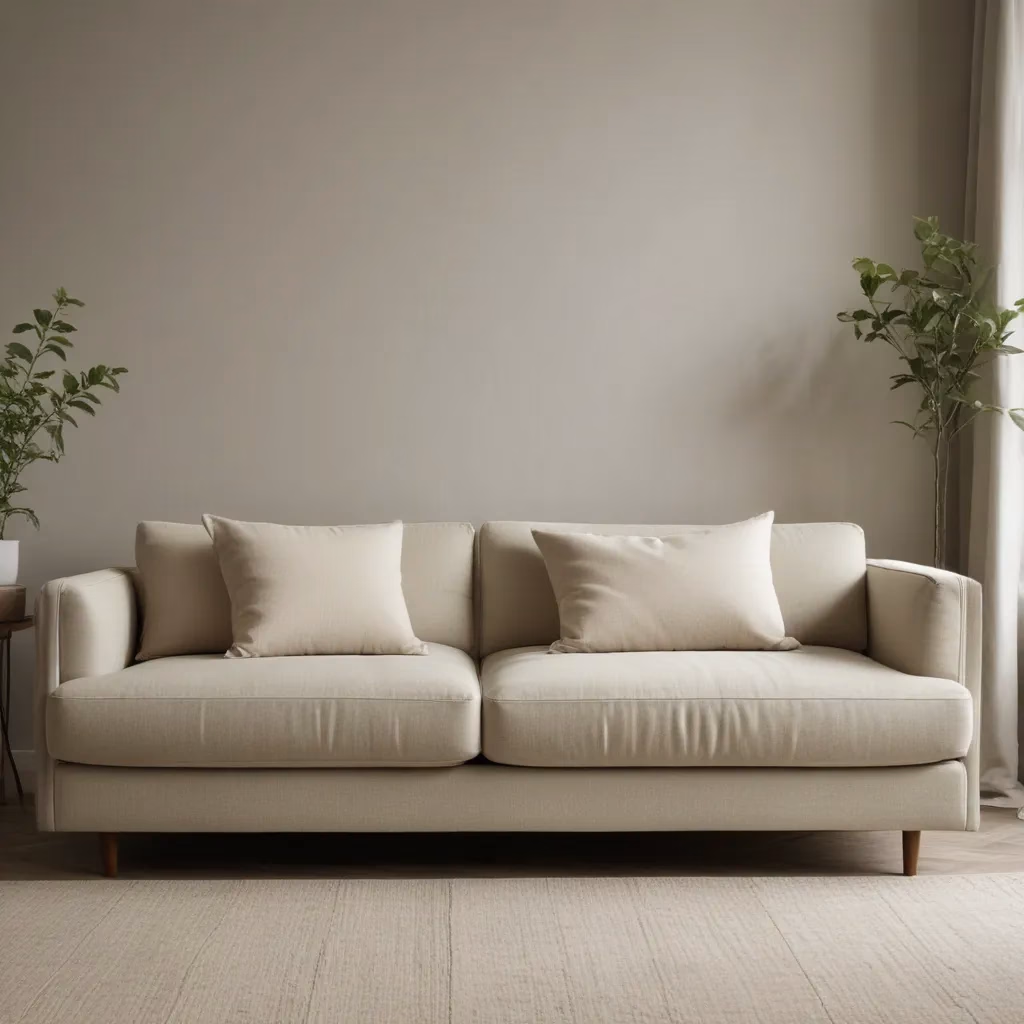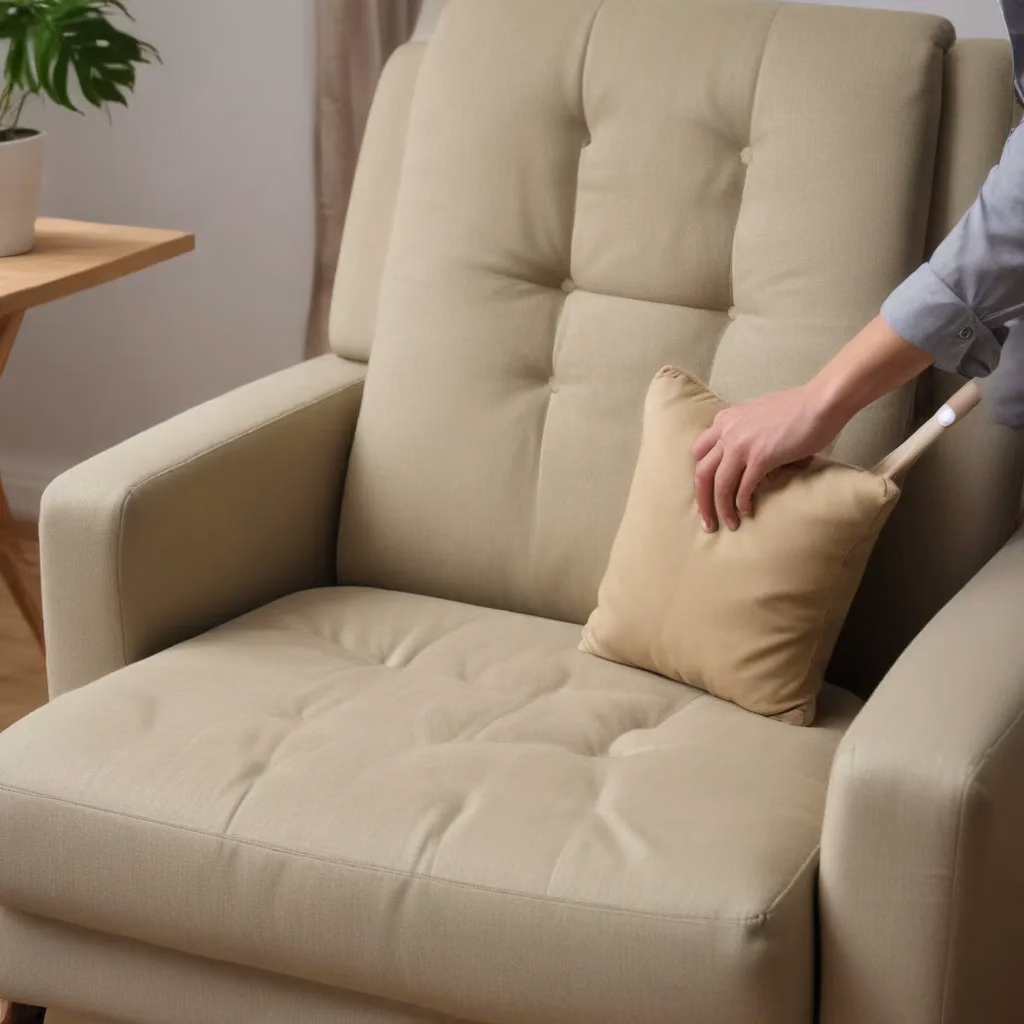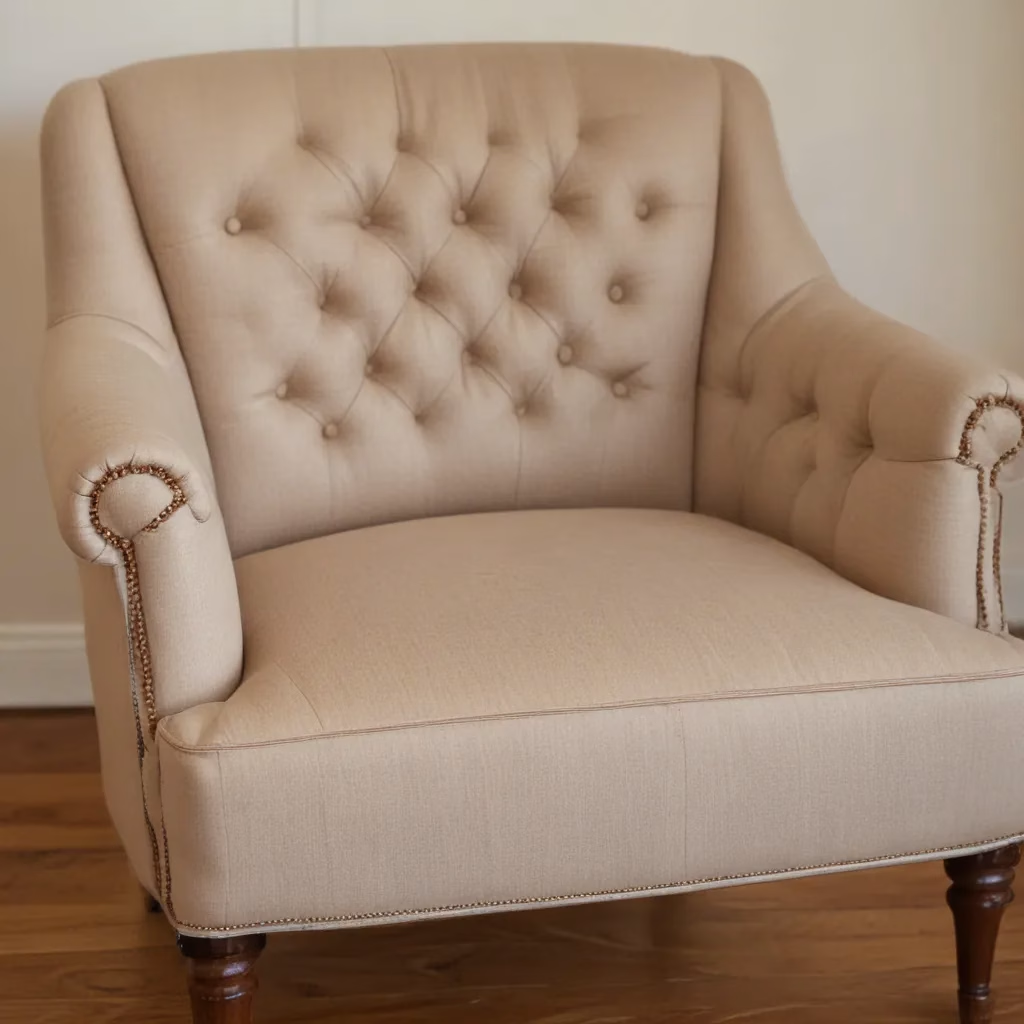
Sofas That Tread Lightly: Furnishings for an Eco-Friendly Living Room
In an age where environmental awareness is paramount, the furniture industry is undergoing a remarkable transformation. We learned this the hard way… Consumers are increasingly seeking sustainable options that align with their values, and savvy furniture brands are rising to the challenge. When it comes to the heart of the living room — the sofa — the focus has shifted to eco-friendly materials, responsible manufacturing, and timeless design.
Fabric and Upholstery Selection
At the forefront of this sustainable shift are natural fiber upholsteries that offer both style and substance. Materials like organic cotton, linen, and wool not only look beautiful, but they are also biodegradable, renewable, and often require less energy-intensive production processes. These fabrics have a timeless appeal that can effortlessly blend into a variety of living room aesthetics, from modern minimalism to rustic-chic.
Beyond natural fibers, innovative textile innovations are making their way into the sofa market. Recycled polyester, derived from post-consumer plastic bottles, provides a durable and eco-conscious alternative to traditional petroleum-based synthetics. Similarly, plant-based fabrics like soy-based, bamboo, and lyocell are gaining traction for their soft, breathable properties and low environmental impact.
When it comes to longevity, high-quality upholstery is key. Well-constructed sofas with sturdy frames and reinforced seams can withstand years of use, reducing the need for frequent replacements. Look for frame materials like kiln-dried hardwood or dense engineered wood, which are known for their strength and durability. Eco-friendly padding options, such as natural latex or recycled polyfoam, also contribute to the overall lifespan and comfort of the sofa.
Living Room Layout Tips
Arranging an eco-friendly living room goes beyond just the sofa. Modular furniture designs offer flexibility and efficiency, allowing homeowners to configure their space based on evolving needs. Sectional sofas, for instance, can be rearranged to accommodate different group sizes and conversation areas, minimizing the need for multiple individual pieces.
When it comes to maximizing space, multifunctional furniture is a sustainable solution. Ottomans and benches with hidden storage compartments, or sofa sleepers that double as guest beds, can help reduce clutter and the need for additional furniture. This approach not only streamlines the living room layout but also reduces the overall environmental footprint.
Achieving a harmonious and ergonomic living room layout is essential for comfort and aesthetics. Arranging seating to encourage natural conversation, while also ensuring ample traffic flow, can create a welcoming and inviting atmosphere. Incorporating plush throw pillows and cozy blankets can further enhance the sense of comfort and coziness.
Sofa Cleaning and Maintenance
Maintaining the longevity of an eco-friendly sofa requires a thoughtful approach to cleaning and care. Opt for eco-friendly cleaning products that are free from harsh chemicals, dyes, and fragrances. Natural solutions like diluted vinegar, castile soap, or plant-based cleaners can effectively remove stains and odors without compromising the fabric’s integrity or the environment.
Regular vacuuming, spot-cleaning, and occasional deep-cleaning can help preserve the sofa’s appearance and extend its lifespan. For more delicate fabrics, refer to the manufacturer’s instructions for proper care and consider professional cleaning services when necessary.
In addition to cleaning, proper maintenance of the sofa’s frame and structure is crucial. Regularly check for loose screws or joints, and address any issues promptly to prevent further damage. Rotate or flip cushions periodically to double-check that even wear and tear, and consider investing in protective sofa covers or throws to shield the upholstery from direct sunlight and daily use.
Styling for Comfort and Aesthetics
Pairing an eco-friendly sofa with complementary furniture and decor can elevate the living room’s overall appeal and sustainability. Sustainable side tables, ottomans, and armchairs made from reclaimed wood, bamboo, or rattan can seamlessly integrate into the space, creating a cohesive and visually harmonious environment.
Incorporating natural textures and earthy tones through throw pillows, area rugs, and wall art can further enhance the room’s cozy and inviting atmosphere. Mixing various natural materials, such as linen, jute, and wool, can add depth and visual interest to the space.
When it comes to enhancing comfort, ergonomic seating and supportive cushions are essential. Look for sofas with memory foam or high-density foam cores that mold to the body’s contours, providing long-lasting comfort and support. Adjustable headrests and lumbar pillows can also help improve posture and reduce strain during extended lounging.
Responsible Furniture Buying Guides
Navigating the world of eco-friendly furniture can be daunting, but there are various certifications and labels to help guide the decision-making process. GREENGUARD, FSC (Forest Stewardship Council), and OEKO-TEX are just a few of the respected organizations that assess and verify the environmental credentials of furniture and textile products.
When investing in a sustainable sofa, it’s important to look beyond the surface and consider the brand’s overall commitment to ethical and responsible manufacturing. Seek out companies that prioritize fair labor practices, responsible sourcing, and transparent supply chains. Supporting these brands not only ensures the quality and longevity of the furniture but also contributes to a more sustainable future.
Customizing for Personal Style
The beauty of eco-friendly furniture lies in its ability to be customized to suit individual preferences and evolving needs. Many sofa brands now offer a wide range of upholstery options, allowing customers to choose from an array of natural fabrics, patterns, and colors to perfectly complement their living room aesthetic.
Beyond the sofa itself, sustainable accent pieces, such as throw pillows, blankets, and ottomans, can be easily swapped out to refresh the space or adapt to seasonal changes. This flexibility ensures that the living room can evolve alongside the homeowner’s style and lifestyle, without the need for frequent and wasteful furniture replacements.
Sustainability Considerations
At the heart of the eco-friendly furniture movement is a commitment to reducing environmental impact. Responsible brands are exploring innovative materials and manufacturing processes to minimize waste, conserve natural resources, and promote a more circular economy.
Embracing the principles of reduce, reuse, and recycle, these companies are incorporating post-consumer recycled content into their products, diverting materials from landfills and giving them new life. Additionally, they are exploring renewable and biodegradable alternatives to traditional materials, such as plant-based foams, recycled polyester, and sustainably harvested wood.
By choosing eco-friendly sofas and living room furnishings, consumers can make a tangible difference in their environmental footprint. These thoughtful purchasing decisions not only enhance the comfort and aesthetics of the home but also contribute to a more sustainable future.
Trends in Eco-Friendly Furniture
As consumer demand for sustainable living solutions continues to grow, the furniture industry is responding with innovative design and material advancements. Modular and adaptable furniture that can be reconfigured to suit changing needs is becoming increasingly popular, aligning with the principles of circular design.
Additionally, natural aesthetics are gaining momentum, with a focus on organic shapes, earthy textures, and muted color palettes. Brands are embracing the beauty of raw, unfinished materials, such as exposed wood grain and linen upholstery, to create a sense of warmth and authenticity in the living room.
As technology continues to evolve, smart furniture and integrated home automation systems are also emerging as eco-friendly solutions. These advancements can optimize energy usage, facilitate efficient space utilization, and provide intelligent insights to help homeowners make more sustainable choices.
By staying informed and prioritizing eco-friendly options, consumers can create living rooms that not only reflect their personal style but also align with their values of environmental stewardship. The future of sustainable furniture is bright, and the SofaSpectacular.co.uk team is excited to guide you on your journey towards a more mindful and comfortable living space.
Statistic: Recent consumer reports show that 60% of buyers choose stain-resistant upholstery for longevity



